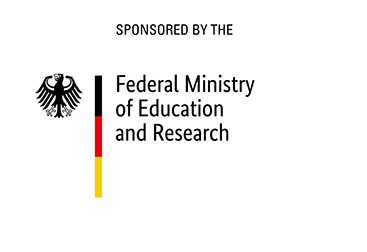Research Interests
Regulation of anti-viral innate immunity/inflammation in defense and disease
Since 01/2025 we are part of the German Center for Neurodegenerative Diseases (DZNE)
Neurovirology & Neuroinflammation
The innate immune system is one of our first defense mechanisms against incoming pathogens. Concerted action of multiple pathways, among them autophagy and the type-I interferon response, efficiently facilitate prevention and/or clearance of microbes such as viruses. However, chronic or aberrant activation of innate immunity (inflammation) during viral infections or in sterile inflammation causes and contributes to pathology.
My lab is mainly focusing on:
- Virus sensing and immune evasion
- Pathogenesis of neuroinvasive viruses
- Termination mechanisms in (neuro)inflammation
- Discovery of immunomodulatory peptides
To approach these, we use a combination of state-of-the-art methods from virology/molecular biology and (bio)chemistry to explore the anti-viral innate immune system in an interdisciplinary manner. Among them are CRISPR, Next-generation-sequencing, proteomics, small compounds/peptide screens and derivatisation, advanced imaging techniques and bioinformatic analysis of large datasets. As models we are using primary human Air-liquid interface cultures and iPSC-derived cerebral/CNS organoids.
Virus sensing and immune evasion
Infection with viruses triggers the activation of innate immune responses. Recently, we showed that viruses are sensed by the actin cytoskeleton (Acharya et al, Cell, 2022) and are currently exploring the general role of the cytoskeleton in virus sensing and inflammation.
However, successful viruses have evolved strategies to counteract our immune system, to enable establish infections. We have characterized novel immune evasion mechanisms of SARS-CoV-2 and HIV-1 (Thoms et al, Science, 2020; Hayn et al, Cell Reports, 2021; Klute et al, BioRxiv, 2024). Currently, we are exploring how respiratory and neurotropic virus infections impact innate immunity in the short and long run.
Pathogenesis of neuroinvasive viruses
While the systemic impact of viral infections on inflammation has been the subject of intense studies in the past decades, we are only beginning to understand the how viruses also influence our central nervous system. Our aim is to understand how classically neurotropic viruses like HSV-1 and Rabies virus but also how neuroinvasive respiratory viruses cause and contribute to human disease, including neurodegenerative diseases.
In addition, we are aiming to exploit the naturally neuroinvasive nature of selected viruses to repurpose them as shuttles for gene therapeutic vectors in neurodegenerative diseases, or fluorescent tracer tools to understand neuronal connections.
Termination mechanisms in (neuro)inflammation
While activation of innate immunity during an infection is essential for anti-viral defense, aberrant or chronic activity of the innate immune system leads to detrimental inflammation. We aim to understand the physiological processes that control and limit inflammation to ensure efficient defenses, but avoid immunopathology (Hirschenberger et al, Nature Communications, 2023; Hoenigsperger et al, Autophagy, 2024; Lang et al, EMBO Reports, 2025).
Discovery of immunomodulatory peptides
Exogenous precision regulation of innate immunity may be an effective new approach to combat viral infections and inflammation. The human peptidome provides a promising source for the discovery of as-yet-unknown physiological modulators of innate immunity (Freisem et al, Cellular and Molecular Life Sciences, 2024). Our goal is to identify, characterize and optimize immunomodulatory human peptides for treatment in infectious and inflammatory diseases, but also to understand their fundamental physiological roles in keeping innate immune homeostasis.
Lab Members
Michaela Eppler | Teamassist | 2025- |
Jana-Romana Fischer | MTA | 2021- |
Birgit Ott | MTA | 2025- |
Maximilian Hirschenberger | Postdoc | 2019- |
Rinu Sivarajan | Postdoc | 2023- |
Susanne Klute | PhD Student | 2020- |
Victoria Hunszinger | PhD Student | 2020- |
Helene Hoenigsperger | PhD Student | 2021- |
Dennis Freisem | PhD Student | 2021- |
Johannes Lang | MD Student | 2022- |
Zoè Engels | PhD Student | 2024- |
Eszter Matiz | Master Student | 2024- |
Kai Baier | Master Student | 2025- |
Alessio Bonadiman | Master Student | 2025- |
Lukas Singer | Hiwi | 2024- |
Alumni
Lennart Koepke | PhD Student | 2018-2023 |

